Pest2Rest: Exploring Integrated Pest Management
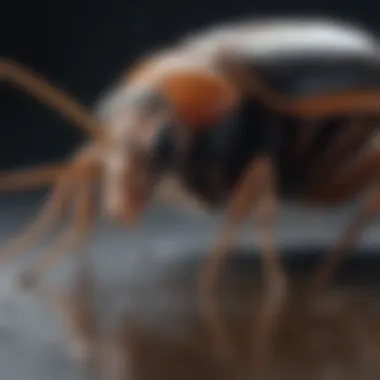
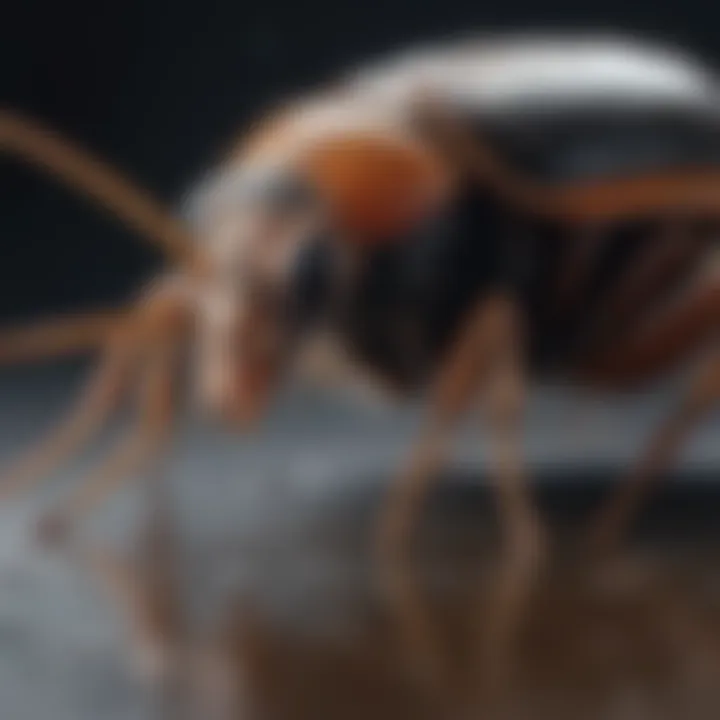
Preventive Pest Control Strategies
Preventive pest control is crucial for maintaining a pest-free environment in both homes and gardens. Implementing effective strategies can minimize risks and reduce the need for more aggressive pest control methods later. This section explores various preventive measures that every homeowner can adopt.
House Exterior Protection
Inspecting the house exterior is the first step in keeping pests at bay. Simple adjustments can be made to protect your home effectively.
Tips for sealing cracks
Sealing cracks and openings prevents pests from gaining access. Use caulk to fill gaps around windows and doors. Inspect your siding for any holes and seal them as well. This will create a barrier against unwanted insects.
Clearing debris
Debris around the house can attract pests, so it is essential to keep the area tidy. Regularly remove leaves, wood piles, and other clutter that can serve as a hiding place for pests like rodents and insects.
Preventing pests from entering
Consider installing screens on windows and doors. Ensure that vents are properly covered to block entry points. By doing these actions, you create a physical barrier that helps reduce the chance of infestations.
Yard Maintenance
Maintaining your yard is equally important for pest control. A well-kept yard can deter pests naturally.
Essential yard care routines
Regular mowing, trimming of bushes, and removing standing water can reduce pest breeding grounds. These simple routines prevent mosquitoes and other pests from multiplying near your home.
Methods for keeping yard pest-free
Planting pest-resistant varieties and using companion planting techniques can help keep pests at bay. Additionally, incorporating natural repellents like marigolds can be an effective deterrent.
Indoor Cleanliness
An unclean home can attract various pests. Implementing expert cleaning tips will enhance indoor hygiene and prevent pest issues.
Expert cleaning tips and techniques
Regular vacuuming and dusting can eliminate food particles and debris that attract pests. Pay extra attention to kitchens and dining areas where crumbs often accumulate. A clean space minimizes the chance for a pest invasion.
Maintaining a pest-resistant indoor environment
Storing food in airtight containers is essential. Keep pet food covered or stored away to avoid attracting unwanted visitors. Additionally, ensure that spills or food leftovers are cleaned immediately to deter pests.
Garbage Disposal
Proper garbage disposal practices play a significant role in pest prevention. Understanding how to manage waste efficiently can protect your home.
Efficient waste disposal methods
Using sealed garbage bins and regularly taking out the trash are simple yet effective ways to prevent pest attraction. Make sure the area around the bins is clean to avoid attracting pests searching for food.
Importance of proper garbage disposal
Improper disposal can lead to pest infestations. By managing waste correctly, you remove an easy food source for pests, which helps maintain a pest-resistant environment.
Other Pest Prevention Strategies
Beyond the standard methods of pest control, there are innovative strategies that can be employed.
Innovative ways to safeguard your home
Using essential oils such as peppermint and eucalyptus can naturally repel pests. Additionally, introducing pest predators like ladybugs in your yard can help control pest populations naturally, creating an ecological balance.
"Prevention is more effective than the cure. Keeping a keen eye on potential pest areas can save time and effort in the long run."
By adopting these preventive pest control strategies, homeowners can significantly reduce the chances of pest problems. The next section delves into identifying pest risk areas, which is essential for understanding and mitigating vulnerabilities effectively.
Understanding Pest2Rest
In a world increasingly concerned with environmental health and agricultural practices, the concept of Pest2Rest emerges as a vital approach to pest management. Integrated Pest Management (IPM), the framework Pest2Rest operates within, is not simply about eradicating pests. Instead, it focuses on creating a balance between human needs and ecological systems. This aligns strategies with a broader understanding of how pests interact within their environments, ultimately leading to more sustainable practices.
Understanding the principles that govern Pest2Rest is essential for both homeowners and agricultural stakeholders. Effectively grasping these elements can lead to better decision-making regarding pest control strategies. By integrating various methods, the Pest2Rest concept shows that long-term solution is achievable without solely relying on chemical pesticides, which may have detrimental effects on health and biodiversity.
Moreover, it promotes proactive measures, such as prevention and monitoring, appealing particularly to house owners who seek to maintain their living spaces in a pest-free manner. This educational model fosters a community around sustainable practices and environmental stewardship.
Definition of Pest2Rest
Pest2Rest refers to a comprehensive approach to managing pests sustainably by leveraging integrated pest management techniques. This includes prevention, monitoring, and intervention strategies that align with ecological principles. The overall objective is to reduce reliance on chemical pesticides, thereby minimizing ecological disruption and health risks associated with these substances.
Historical Context
The history of pest management reveals critical insights into the development of the the Pest2Rest model. Understanding this context provides a framework for appreciating current practices and innovations.
Early Pest Management Practices
In ancient times, pest management often involved rudimentary methods such as crop rotation and the use of natural predators to control pest populations. Early societies did not possess the scientific knowledge available today, yet their practices were effective in maintaining the ecological balance.
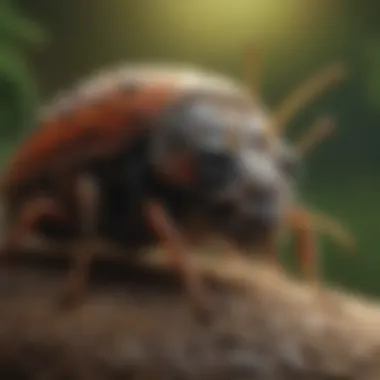

- The key characteristic of early pest management was its reliance on the natural environment. This approach is considered beneficial as it promoted biodiversity and reduced chemical intervention. While these methods were more sustainable, they were sometimes limited by local knowledge and resources. Their unique feature was the focus on hand-on techniques which nurtured understanding of local ecosystems, fostering a long-term relationship between humans and nature.
Evolution of Integrated Pest Management
The evolution of integrated pest management is a turning point in pest control strategies. It began in the mid-20th century as a response to the intensive use of chemicals, which led to resistance and environmental degradation. IPM incorporates a variety of strategies in an adaptive framework to manage pests effectively.
- A key characteristic of this evolution is its multidisciplinary approach. This comprehensive method allows for better assessment and management of pests and enforces sustainable practices. The unique feature of IPM lies in its adaptability across different ecosystems, optimizing the effectiveness of control measures while reducing ecological impact. However, it can be complex to implement, requiring ongoing education and flexibility in approach.
Objectives of Pest2Rest
Clearly defining the objectives of Pest2Rest is essential to understand its place in sustainable pest management.
Ecological Balance
The concept of ecological balance is fundamental to Pest2Rest. It focuses on maintaining healthy ecosystems where pests are kept in check by their natural predators. This balance ensures that agricultural and urban environments remain pest-free without excessive chemical use.
- The key characteristic here is the focus on harmonious interactions within ecosystems. This is a beneficial approach, as it promotes resilience within agricultural and urban communities. The unique aspect is its focus on biodiversity, encouraging a diverse range of organisms to thrive, which directly contributes to pest control. However, achieving this balance can be challenging and requires thorough understanding of ecosystem dynamics.
Sustainable Agriculture
Sustainable agriculture forms another critical objective of Pest2Rest. It aims to enhance food production while conserving resources and protecting the environment. Sustainable practices include crop diversification, soil health management, and integrated pest management strategies.
- The key characteristic of this objective is its focus on long-term solutions for food production, which is increasingly necessary in today's context. This aspect of Pest2Rest is beneficial because it aligns economic viability with environmental health. The uniqueness of sustainable agriculture lies in its holistic framework, which embraces ecological health, economic profitability, and social equity. However, transitioning to sustainable practices can be economically challenging for some producers.
Key Principles of Integrated Pest Management
Integrated Pest Management (IPM) is a crucial framework within the Pest2Rest approach. It emphasizes the combination of various strategies to manage pest populations in an effective and environmentally sound way. Each principle in IPM plays a significant role in balancing human needs and ecological considerations. Here are the key principles that define IPM and their importance in pest control strategies.
Prevention and Monitoring
Site Assessment
Site assessment is foundational for effective pest management. It involves a thorough evaluation of the environment to identify potential pest risks. This process includes examining the layout of the space, the types of plants or crops present, and moisture levels that attract pests. The key characteristic of site assessment is its focus on understanding the unique conditions that affect pest populations in a specific area. This makes it a popular choice for practitioners in integrated pest management.
The unique feature of site assessment is its role in prevention. By understanding where pests are likely to thrive, one can implement proactive measures to deter them before they become a problem. However, this approach requires time and expertise, which can be a challenge for some homeowners.
Continuous Monitoring Techniques
Continuous monitoring techniques ensure that pest populations are tracked over time. This aspect of IPM allows for timely intervention before infestations escalate. Techniques may include regular inspections, the use of traps, and even technology like remote sensors. The key characteristic of these techniques is their ability to provide real-time data about pest presence and behavior, making them a beneficial choice in pest management.
A unique feature here is the integration of technology. Many homeowners now use smart devices that alert them when conditions favor pest activity. The advantage is that it allows for immediate response. However, reliance on technology also has disadvantages, including the cost of equipment and the need for technical knowledge to operate it effectively.
Cultural Control Methods
Crop Rotation Practices
Crop rotation is a vital cultural control method used to disrupt pest life cycles and reduce their populations in agricultural settings. This practice involves changing the types of crops grown in a particular area over different growing seasons. The key characteristic of crop rotation is its simplicity and effectiveness, making it a favored strategy among farmers and gardeners alike.
A major advantage of crop rotation is its ability to naturally lower pest populations that are specific to certain plants. However, it requires careful planning and understanding of crop families to avoid issues. In some cases, the rotation period may also limit yield potential, creating a balance that must be managed.
Sanitation Efforts
Sanitation is a critical practice in pest management, emphasizing the importance of cleanliness in preventing infestations. This involves removing debris, excess water, and any potential food sources for pests. The key characteristic of sanitation efforts is their ability to create an inhospitable environment for pests, thereby reducing chances of infestation. It is widely considered a beneficial practice due to its low cost and straightforward implementation.
Unique to sanitation is the aspect of routine maintenance. Regularly clearing areas can significantly lower pest numbers over time. Nevertheless, maintaining cleanliness requires consistent effort and may not yield immediate results, which can be frustrating for homeowners.
Biological Control Strategies
Beneficial Insects
Beneficial insects are a fundamental component of biological control strategies in pest management. These insects, such as ladybugs and lacewings, naturally prey on pest species, helping to maintain population control. The key feature of using beneficial insects is their ecological role, which promotes a balance within the garden or farm environment, making them a popular choice for sustainable pest management.
A unique aspect of this strategy is the biodiversity it promotes. Implementing beneficial insects not only reduces pest numbers but also enhances the overall health of the ecosystem. However, the disadvantage lies in the time it takes for these insects to establish themselves and effectively reduce pest populations.
The Role of Biodiversity
Biodiversity plays a crucial role in reducing pest pressure in an ecosystem. A variety of plant species can attract different beneficial insects and promote natural pest control. The key characteristic of this principle is its emphasis on ecological balance, making biodiversity a beneficial choice for sustaining pest-free environments.
One unique feature is the concept of habitat diversification. By planting diverse species, gardeners create environments that are less conducive to pest outbreaks. However, maintaining such diversity requires knowledge of plant interrelationships and additional planning, which can be time-consuming for some.
Chemical Control Considerations
Safe Application Procedures
Safe application procedures for pesticides ensure that chemicals are used responsibly and effectively in pest management. This includes following manufacturer instructions for dosage, timing, and application methods. The key characteristic of safe procedures is their focus on minimizing harm to non-target species and the environment, making them a preferred choice in integrated pest management.
A unique feature of these procedures is the training and education provided to homeowners and agricultural workers. Proper training can lead to safer practices and better outcomes. However, there are disadvantages, including the need for regulatory compliance and potential cost for training programs.
Impact Assessment of Pesticides
Impact assessment of pesticides is essential for understanding their effects on both pests and the surrounding ecosystem. This involves analyzing the immediate and long-term consequences of pesticide applications. The key characteristic of this assessment is its role in promoting more informed decision-making, making it an integral aspect of Pest2Rest strategies.
The unique feature of impact assessment is the comprehensive data it provides on ecological health. This can guide future pest control decisions. However, inadequate assessments can lead to misapplications that harm beneficial species, highlighting the need for careful evaluation and ongoing monitoring.
Effective integrated pest management strategies combine a variety of approaches to create a balanced ecosystem. Emphasizing prevention, cultural practices, biological control, and responsible chemical use is essential for sustainable pest management.
Application of Pest2Rest Principles
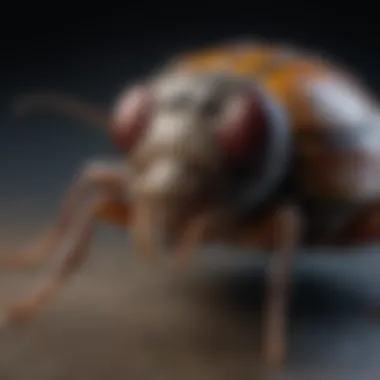
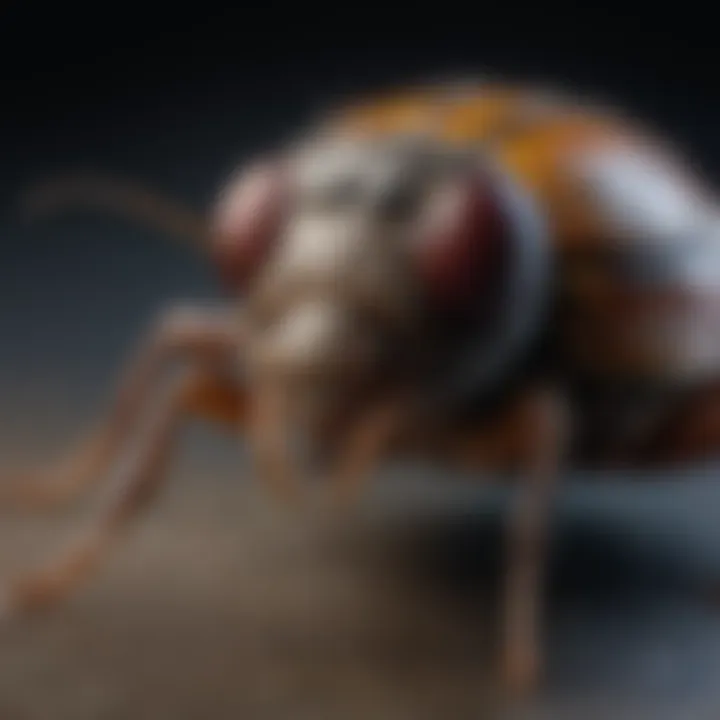
The application of Pest2Rest principles is a vital aspect of integrated pest management (IPM). It facilitates a balanced relationship between ecological health and human activity. By implementing these principles, we can achieve sustainable solutions that minimize pest challenges while ensuring agricultural and urban environments remain productive and resilient. Each setting will require tailored approaches depending on specific needs and environmental conditions.
Urban Environments
Challenges in Pest Management
Urban environments face distinctive challenges in pest management. The high density of human habitation and activity increases the likelihood of pest invasions. These invasions can lead to health risks and economic losses. Furthermore, the varied ecosystems in cities create both patches of suitable habitats for pests and barriers that complicate control measures.
One key characteristic of urban pest management challenges is the pressure to use quick and often ineffective solutions. This approach, while seemingly beneficial in the short term, can lead to long-term complications. Over-reliance on chemical treatments can cause resistance among pest populations, making them harder to control in the future. Additionally, these chemicals can pose risks to non-target organisms and human health, raising concerns in communities.
Moreover, urban residents often lack knowledge about sustainable pest management practices, leading to non-ideal solutions. Availability of resources and local regulations can also impact decision-making in urban pest control. Thus, understanding these challenges is essential for developing effective long-term strategies.
Successful Case Studies
Successful case studies in urban pest management demonstrate the potential of applying Pest2Rest principles. These instances often involve collaborative efforts between local governments, residents, and pest control experts. A key characteristic of these successful cases is the comprehensive approach combining education, monitoring, and community participation.
One unique feature of such case studies includes the implementation of community gardens and integrated landscaping to foster biodiversity. This has proven advantageous in reducing pest populations as it encourages natural predators. The involvement of residents enhances their understanding and proactive engagement in pest management, building a sense of ownership.
However, these successful initiatives can encounter challenges. They often require initial investment and sustained commitment from participants. Furthermore, the variability of urban environments can sometimes complicate the transferability of these solutions to different locations. Nevertheless, these case studies highlight the efficacy of collaborative, educated approaches in urban pest management.
Agricultural Settings
Crop-Specific Strategies
Crop-specific strategies are crucial for managing pests in agricultural settings. Tailoring approaches based on the specific crops being cultivated allows for more effective pest control. Each crop has unique pests associated with it, and understanding these relationships is key to successful management.
A major benefit of these strategies is precision in treatment. For instance, using targeted biological controls can significantly reduce pest populations without harming beneficial insects. This focus on specificity helps to mitigate risks associated with pesticide overuse and enhances overall crop yields.
Despite their advantages, crop-specific strategies can require intensive research and regular monitoring, demanding time and resources. Farmers may need to invest in training and technology to implement these methods effectively. Yet, the long-term benefits of protecting crops from pests and enhancing sustainability often outweigh these initial costs.
Integration with Farm Management
Integration with farm management is an essential component of Pest2Rest principles. This concept emphasizes the incorporation of pest management strategies into the overall farm operation. By doing so, producers can align pest control with other aspects like soil health and nutrient management.
One significant advantage of this integration is the optimization of resource use, resulting in lower costs and improved productivity. Coordination allows farmers to anticipate pest problems based on crop cycles and environmental factors, enhancing their readiness. Thus, pest management becomes a proactive rather than reactive measure.
However, integrating these approaches into farm management can be challenging. Farmers may need to adapt their routines and invest in education or new practices. There may also be a learning curve associated with monitoring and assessment. Still, the synergy of aligned practices supports biodiversity and long-term productivity.
Biodiversity Conservation
Restoration Projects
Restoration projects are vital in enhancing biodiversity conservation within the context of pest management. These projects aim to restore natural habitats that can function as buffers against pest populations. A major benefit of such initiatives is the promotion of ecological balance.
By fostering native plants and wildlife, restoration projects can naturally control pest populations. For instance, planting cover crops can attract beneficial insects that prey on pests, reducing the need for chemical interventions.
However, these restoration projects often require considerable planning and resources. The successful execution of these initiatives can depend heavily on collaboration between various stakeholders. Still, when implemented effectively, restoration projects can yield significant ecological benefits.
Community Involvement
Community involvement plays a crucial role in enhancing biodiversity conservation related to Pest2Rest principles. Engaging local communities in pest management fosters ownership and awareness. A key characteristic of community involvement is the collaborative development of sustainable practices.
One unique feature is the empowerment of residents to participate in local conservation efforts. These efforts may include education about native species, monitoring biodiversity, and advocating for sustainable practices. This engagement is beneficial as it instills a sense of responsibility and helps build knowledge within the community.
Challenges do exist, particularly in coordinating efforts and ensuring consistent participation. Nevertheless, the positive outcomes from active community participation indicate its value in supporting biodiversity conservation initiatives.
Challenges Facing Pest2Rest Implementation
Implementing the Pest2Rest approach to integrated pest management is not without its hurdles. Each challenge presents its own set of obstacles, requiring careful consideration and strategic solutions. The significance of addressing these challenges lies in the eventual success and sustainability of pest management practices. Understanding these challenges improves overall effectiveness and widens the acceptance of integrated methods.
Resistance Issues
Understanding Pest Resistance
Pest resistance is a critical issue in natural pest management. It occurs when pests develop genetic changes that allow them to survive treatments that previously exterminated them. This resistance is particularly important as it can lead to the failure of pest control strategies, necessitating the use of more potent chemicals. This aspect contributes to the overall goal of sustainable pest management. Tackling resistance ensures that the effectiveness of interventions remains intact over time.
Key characteristics of pest resistance include its rapid development and widespread occurrence. Pests exposed to pesticides can adapt, leading to resistant populations. The challenge of pest resistance highlights its significance in pest management, as it directly influences the longevity of existing strategies.
From a practical perspective, understanding resistance helps highlight its unique necessity in planning pest control measures. Its advantages lie in fostering sustainable practices. Avoiding over-reliance on chemicals, for instance, leads to long-term solutions.
Mitigation Strategies
Mitigation strategies are essential for managing resistance effectively. These strategies involve methods designed to slow down or prevent the development of resistant pest populations. They contribute significantly to the overall goal of maintaining the efficacy of pest control measures. These strategies include rotating pesticides, implementing integrated pest management, and using biological controls, all crucial to successfully navigate pest resistance.
Key aspects of mitigation strategies include their adaptability and comprehensive nature. They can be tailored to specific environments or pest types, making them versatile. Their beneficial characteristics foster resilience within pest control frameworks.
Unique features of these strategies can include proactive approaches such as monitoring pest populations and encouraging biodiversity. While these might require additional effort, the long-term benefits of reducing resistance remain invaluable.
Economic Constraints
Cost-Benefit Analysis
Cost-benefit analysis plays a vital role in determining the viability of pest management strategies, including Pest2Rest. It involves comparing the costs of implementing pest control measures with the expected benefits. This evaluation is crucial for identifying the most effective interventions that also align with economic realities. Understanding these dynamics is essential for making informed decisions in management practices while ensuring sustainability.
Key characteristics include its analytical nature, providing clear visibility into financial implications. By discerning whether benefits outweigh costs, professionals can justify investments in integrated pest management.
The unique feature of cost-benefit analysis lies in its ability to provide data-driven insights to stakeholders. While it enhances understanding, the drawbacks might include the complexity of evaluating some long-term benefits, which can be difficult to quantify.
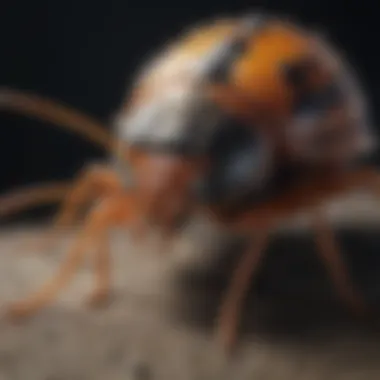
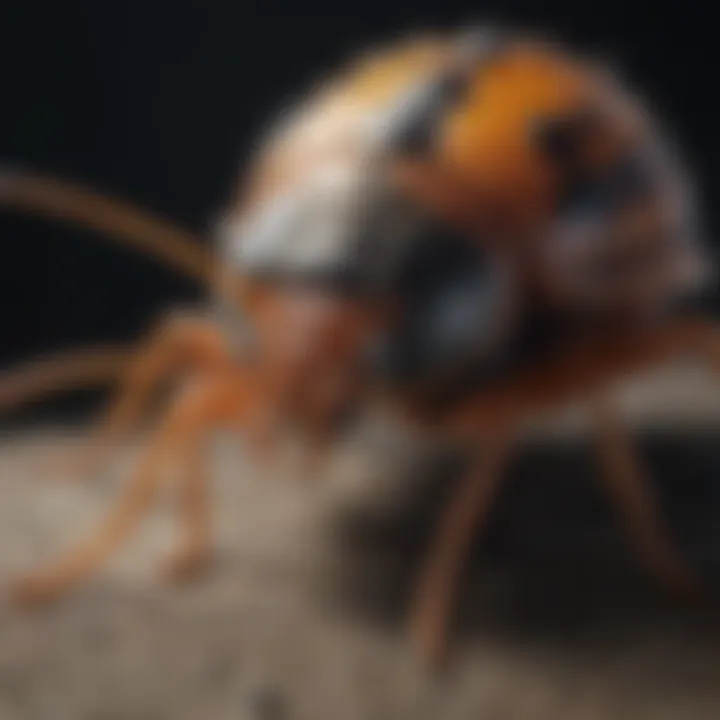
Funding Opportunities
Funding opportunities are essential for supporting integrated pest management efforts, including the Pest2Rest approach. Financial resources can help implement various control measures and research initiatives. These opportunities directly contribute to overcoming economic constraints faced in pest management. Recognizing and leveraging funding can significantly improve the effectiveness of pest control efforts.
Key aspects of funding opportunities involve the diversification of available resources. Grants, subsidies, and strategic partnerships can provide necessary financial backing. Securing these funds enables broader acceptance and implementation of innovative pest management solutions.
The unique feature of exploring funding opportunities is the capacity to foster community involvement in pest management initiatives. While it often comes with procedural requirements, the long-term gains from successful projects can outweigh initial drawbacks.
Legislative and Policy Barriers
Regulations on Pesticides
Regulations on pesticides form a pivotal area of challenge in the Pest2Rest framework. These regulations govern the production, sale, and usage of chemical pesticides, directly impacting management practices. The presence of stringent regulations can limit options available for pest control, hence influencing integrated management strategies. Understanding this landscape is crucial to navigating complexities in pest management.
Key characteristics of pesticide regulations include their emphasis on safety and environmental sustainability. They are designed to protectboth human health and ecosystems, ensuring that pest management practices do not lead to adverse consequences.
The unique feature of these regulations lies in their adaptability to current research findings. While a downside might involve slow bureaucratic processes that can hinder rapid adoption of new methods, their long-term effects are essential for responsible pest management.
Incentives for Sustainable Practices
Incentives for sustainable practices serve as powerful tools to encourage the adoption of integrated pest management frameworks. These incentives can come in the form of grants, tax breaks, or recognition programs aimed at promoting responsible pest control methods. Their contribution to the overall goal of sustainable pest management cannot be overstated, as they also help align economic interests with environmental priorities.
Key aspects of these incentives include their potential to lower barriers to entry for those considering sustainable practices. By providing financial or social recognition, stakeholders are more likely to engage in practices that support Pest2Rest initiatives.
The unique nature of incentives lies in their ability to create a positive feedback loop. They encourage continuous improvement in pest management while ensuring compliance with existing regulations. Nevertheless, the challenge remains that not all organizations may be aware of such opportunities, indicating a need for greater outreach.
Future Directions in Pest2Rest Research
As the landscape of pest management evolves, Future Directions in Pest2Rest research become increasingly pertinent. This section highlights the innovative strategies and collective efforts needed to enhance pest management practices. Emphasizing technological advancements and collaborative approaches, this exploration serves as a springboard for effective implementations of Pest2Rest strategies.
Technological Innovations
Remote Sensing Applications
Remote Sensing Applications entail the use of satellite or aerial imagery to monitor agricultural environments. This technology allows for timely identification of pest infestations. A key characteristic is its ability to cover large areas quickly and efficiently. For Pest2Rest, this approach underscores the importance of real-time data in anticipating pest outbreaks.
A unique feature of remote sensing is its capacity for collecting data without direct human interaction. This can lead to a more accurate assessment of pest population dynamics. The advantages include efficient resource allocation and minimal environmental disruption. However, the initial setup can be costly and may require training for effective use.
Data Analytics in Pest Management
Data Analytics in Pest Management involves analyzing vast amounts of data to identify patterns and trends in pest behavior. This method aids in developing predictive models which can guide intervention measures. A prominent benefit is its potential for enhancing decision-making processes. It allows for more targeted approaches, thus reducing waste and increasing efficiency in pest control efforts.
The data-driven nature of this approach is particularly beneficial for Pest2Rest, as it utilizes precise information to inform practices. A unique aspect is the integration of machine learning algorithms that continuously improve predictions over time. Although it can require significant initial investment, the long-term benefits often justify the costs.
Community-Based Approaches
Education and Outreach
Education and Outreach programs focus on raising awareness about pest management strategies among communities. By informing stakeholders on effective practices, these efforts promote a more sustainable approach to pest control. A key feature is the empowerment of local communities to take an active role in managing pests.
This approach is valuable for Pest2Rest as it nurtures a culture of responsible pest management. Educational initiatives often include workshops and informational sessions. However, tailoring messages to diverse audiences can be challenging, necessitating adaptability in communication methods.
Participatory Research Models
Participatory Research Models encourage stakeholders to engage in the research process. This collaborative method enriches the understanding of pest control dynamics based on local observations. Its value lies in creating a sense of ownership and accountability among participants, fostering more sustainable practices.
A noteworthy characteristic is its adaptability to different contexts, allowing for tailored strategies. Though this approach can initially be time-consuming, the long-term benefits of cooperative data collection and shared insights vastly outweigh the downsides.
Global Collaborations
International Research Initiatives
International Research Initiatives facilitate the exchange of knowledge across borders. By pooling resources and expertise, these programs can address pest challenges more effectively. A significant advantage is the diversification of research, drawing from various ecological contexts and practices.
Engagement in such initiatives is essential for the Pest2Rest ethos, which advocates for a unified global response to pest management. Unique features include the formation of multinational teams that can tackle complex issues collaboratively. However, coordinating efforts across different countries can present logistical challenges and cultural differences that require careful management.
Sharing Best Practices
Sharing Best Practices among nations enhances learning and adapts successful strategies to different environments. This practice allows for rapid dissemination of effective pest management techniques. A crucial aspect is the creation of networks, enabling experts to connect for knowledge exchange.
The effectiveness of this approach lies in its accessibility; stakeholders can learn from others’ experiences without reinventing the wheel. However, context-specific adaptations are necessary for successful implementation in varying local conditions.
"Engaging communities and leveraging technology are essential aspects of future pest management strategies."
Ending
The conclusion of this article presents a critical synthesis of the main ideas discussed throughout the sections related to Pest2Rest. This final part consolidates essential insights, emphasizing the multifaceted nature of integrated pest management and its importance for sustainable practices in both urban and agricultural contexts.
Summary of Key Points
In this article, we explored several crucial aspects of Pest2Rest. We discussed the historical context of pest management, revealing how traditional methods evolved into a more integrated approach. The importance of ecological balance as a foundational concept for sustainable agriculture was heavily underscored. Key principles of integrated pest management such as prevention, cultural practices, biological means, and chemical control considerations were elaborated, demonstrating their collective role in combating pest issues effectively.
The application of Pest2Rest principles across varied environments illustrated both urban and agricultural challenges, showing that success hinges on tailored strategies. Challenges in implementing these strategies include resistance issues, economic constraints, and legislative barriers which must be navigated effectively. Lastly, future directions emphasized the role of technology, community involvement, and global cooperation in advancing pest management.
Final Thoughts on Pest2Rest
Reflecting on Pest2Rest, it becomes clear that this approach offers a promising pathway towards sustainable pest management. The strategies outlined in this article not only address immediate pest-related challenges but also work to build a foundation for long-term ecological harmony.
The integration of diverse methodologies enhances our ability to adapt to changing environments and pest behaviors. Furthermore, by fostering community awareness and engagement, we can promote responsible stewardship of our ecosystems.
"Integrated Pest Management is not just a practice; it is a necessary response to the demands of modern agriculture and urban living."
As housewives and homeowners, understanding these strategies empowers informed decisions about maintaining a pest-free environment while respecting nature's intricate balance. Engaging in Pest2Rest means contributing to a healthier planet for present and future generations.



